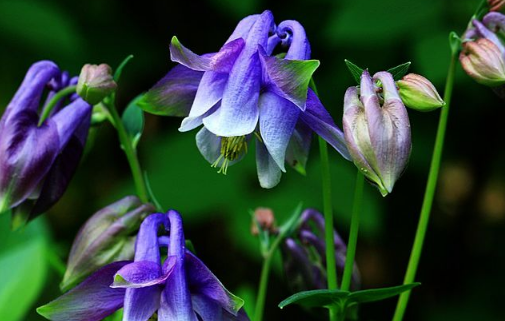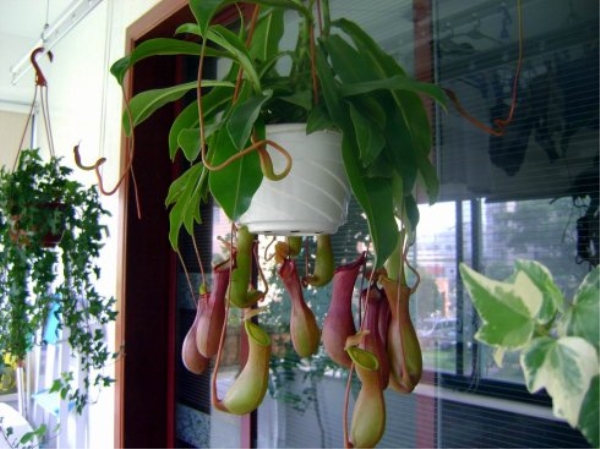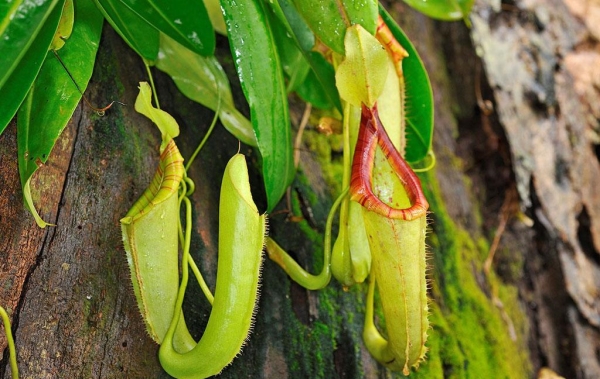Matters needing attention in the culture of Rabdosia angustifolia
Diseases and insect pests
The main pest is aphid, the harm is relatively great, it will also cause mosaic disease, in addition, there is the harm of powdery mildew, which needs timely and reasonable treatment.

The above is about the introduction of the content of Doucai. I hope this article can help the flower friends who are breeding it.
Culture methods and matters needing attention of Rabdosia angustifolia
Selection of potted soil as a culture method of Rabdosia angustifolia
For potted plants, you need to choose a slightly larger flowerpot and put the soil in the flowerpot, which can be sandy soil with good drainage or humus-rich saprophytic soil, and a little base fertilizer should be added to the soil.
Light and temperature
Douzi likes a cool climate, avoid high temperature but can be cold-resistant, and need to keep enough light. It is necessary to maintain the growth temperature between 15 ℃ and 35 ℃, with moderate light to avoid high temperature and sun exposure in summer, when shading is needed, or the potted plants should be kept in a semi-shaded place.
Watering and fertilizing
Euphorbia angustifolia needs to strengthen the management of reasonable watering and fertilization. In the peak period of growth, we need to give sufficient water, according to the degree of dryness and wetness of the basin soil to determine the amount and times of watering, but avoid stagnant water. Dry weather needs timely drainage, and after rain, it needs timely drainage, pay attention to maintain a certain amount of air humidity. Fertilization requires medium fertility. Fertilizer can be applied once a week, but the concentration should not be too high. Pay attention to stop fertilizing after autumn, in addition, you need to apply some phosphate and potash fertilizer before flowering to make the flowering more gorgeous.
Matters needing attention in Culture and breeding methods of Rabdosia angustifolia
Basically, it is propagated by ramet or sowing, which can be sowed in spring or autumn, and ramet reproduction is mainly in autumn.
Pick the heart
During the growth period, it is necessary to pick the heart in time to control the height of the plant. After blooming, the remnant flowers can be cut off, so that it can be preserved as a foliage plant.
Diseases and insect pests
The main pests are aphids, which can cause mosaic disease and powdery mildew, which need timely and reasonable treatment.
Culture methods and matters needing attention of Ipomoea oleifera
English name: Ipomoea aquatica
Also known as: fake custard, elm, black brocade, Yimu Ningjing
Latin scientific name: Paraquilegia microphylla
Families and genera: Ranunculaceae
Distribution of origin: Xizang, northwest Yunnan, western Sichuan, Gansu and other places
Ipomoea lanceolata, rhizome finely cylindrical to subfusiform, leaves numerous, usually 2-Ternate, glabrous; leaf blade triangular-ovate in outline, central leaflet broadly rhombic to reniform-rhombic, surface green, abaxially light green; scape erect, longer than leaves, sepals pale pansy or light purplish red, occasionally white, Obovate to elliptic-Obovate; petals Obovate to Obovate-long elliptic Cymbals erect, seeds narrowly ovoid, brown, lateral narrowly winged, smooth. It blossoms from June to August and bears fruit from August to September. It has medicinal value.
- Prev

Culture method of pitcher plant
Temperature pitcher plant is a tropical plant, like high temperature, not cold-resistant, the suitable temperature for its growth is 20 to 30 degrees. The pitcher plant is extremely cold-resistant, and it will stop growing if the temperature is too low. Therefore, in order to avoid the pitcher plant from being frozen in winter, it is necessary to take protective measures to ensure that the indoor temperature is not lower than 10 ℃.
- Next

Matters needing attention in breeding pitcher plants
Pitcher plant is a tropical plant, like the high temperature environment, but not cold-resistant, so winter to spend the winter indoors. And although it is a tropical plant, it can grow in the sun, but it is afraid of strong light. Pay attention to sunscreen in summer. The usual way is to set up a sunscreen.
Related
- Fuxing push coffee new agricultural production and marketing class: lack of small-scale processing plants
- Jujube rice field leisure farm deep ploughing Yilan for five years to create a space for organic food and play
- Nongyu Farm-A trial of organic papaya for brave women with advanced technology
- Four points for attention in the prevention and control of diseases and insect pests of edible fungi
- How to add nutrient solution to Edible Fungi
- Is there any good way to control edible fungus mites?
- Open Inoculation Technology of Edible Fungi
- Is there any clever way to use fertilizer for edible fungus in winter?
- What agents are used to kill the pathogens of edible fungi in the mushroom shed?
- Rapid drying of Edible Fungi

